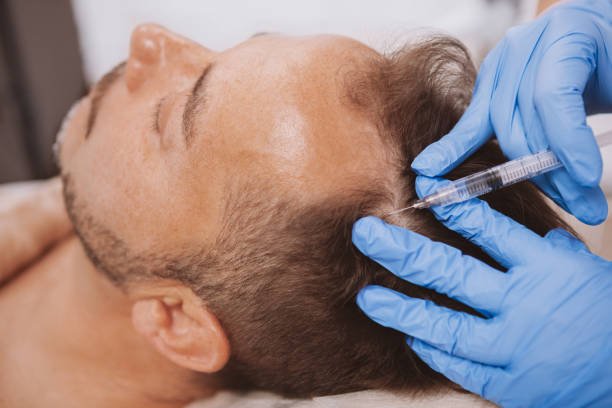Introduction:
Hair loss is a global issue that affects millions of people – both men and women alike. While there are various treatments available on the market, not all offer satisfactory outcomes. An emerging hair loss treatment among hair restoration specialists is Platelet-Rich Plasma (PRP) therapy. In this comprehensive guide, we will investigate its effectiveness for hair growth and whether it’s right for you. As one of London’s premier hair transplant clinics, Revitalise London Hair Transplant Clinic strives to offer our clients only the best solutions possible.
What Is PRP Therapy?
PRP (Platelet-Rich Plasma) therapy is a non-surgical procedure that utilises the patient’s own blood to stimulate hair growth. The process includes:
- Extraction of blood
- Separating platelets and plasma
- Injecting this platelet-rich plasma into the scalp
- Platelets contain various growth factors and proteins which may stimulate hair follicles, stimulating hair growth and improving density.
How Does PRP Aid Hair Growth?
PRP therapy for hair growth relies on platelets’ capacity to release growth factors that can stimulate hair follicle activity. These growth factors include:
- Platelet-Derived Growth Factor (PDGF): Stimulates cell division and growth.
- Transforming Growth Factor-Beta (TGF-b): Promotes tissue repair and regeneration.
- Vascular Endothelial Growth Factor (VEGF): Promotes blood vessel formation, improving circulation to hair follicles.
- Epidermal Growth Factor (EGF): Stimulates cell growth and differentiation.
Together, these elements work synergistically to create the ideal environment for hair growth by increasing blood supply, stimulating cell division, and relieving inflammation.
An Overview of PRP Therapy at Revitalise London Hair Transplant Clinic
PRP therapy has seen a recent surge of interest in the hair restoration field, though its roots can be traced back to the 1970s. At that time, PRP was used primarily for wound care and surgery recovery; however, its applications expanded exponentially during the 1990s when sports medicine specialists started using PRP to treat athletic injuries. Today medical professionals are beginning to recognize its potential benefits for various treatments including hair restoration.
Is PRP Effective for Hair Growth?
Studies have yielded promising results when it comes to PRP therapy for hair growth. Clinical trials have proven its efficacy in improving hair density, thickness and overall hair health. It’s essential to note that PRP therapy may not be suitable for everyone; those experiencing early thinning or loss of their locks tend to benefit most from this treatment.
Are You Ready to Begin? Arrange a Consultation Now!
Are you ready to take the first step toward solving your hair loss concerns? Get in touch with Revitalise London Hair Transplant Clinic today and let our team of experts assist you find the best solution. Book a consultation to discover more about PRP therapy for hair growth and how it could benefit you – call us at 020 4552 4481.
Who Can Benefit From PRP Therapy and What Limitations Apply?
Not everyone is a suitable candidate for PRP therapy. The treatment typically works best for those experiencing hair thinning or loss in its early stages, as well as individuals who have recently undergone hair transplant surgery and want to speed up healing. On the contrary, PRP therapy might not be effective in cases of complete baldness, certain types of scarring alopecia, and other medical conditions affecting hair growth.
PRP Therapy Procedure and Aftercare
The PRP therapy procedure consists of the following steps:
- Blood Extraction: A small sample of the patient’s blood is drawn.
- Blood Processing: Centrifuge the blood to separate platelets and plasma.
- PRP Preparation: Remove platelet-rich plasma for injection into the patient.
- PRP Injection: PRP is carefully injected into the patient’s scalp in the areas experiencing hair loss.
The entire procedure usually takes 60-90 minutes, and most patients require multiple sessions for optimal results.
Aftercare instructions may include:
After your treatment, avoid intense exercise for 24 hours after it. Refrain from using hair products for at least 48 hours afterwards, and gently shampoo the treated area with mild shampoo. Finally, protect yourself from direct sunlight by wearing a hat for protection.
Alternatives to PRP Therapy
If PRP therapy is not the ideal solution for your hair loss concerns, other treatment options may be more suitable. These may include:
- Minoxidil (Rogaine): An over-the-counter topical solution designed to slow hair loss and promote hair growth.
- Finasteride (Propecia): A prescription medication designed to reduce hair loss and promote new hair growth.
- Low-Level Laser Therapy (LLLT): A non-invasive procedure that utilizes light energy to promote hair growth.
- Hair transplant surgery: A surgical procedure in which donor area hair follicles are transferred to an area suffering from hair loss.
Consulting with a hair restoration expert is essential to determine which treatment option best meets your individual requirements.
Conclusion
PRP therapy for hair growth has shown promising results in clinical trials and has provided relief to many individuals experiencing early hair thinning or loss. Nonetheless, it’s essential to remember that PRP therapy may not be suitable for everyone; therefore, consult a hair restoration specialist like Revitalise London Hair Transplant Clinic before deciding if PRP is the right choice for you.
Call-to-action: Book your consultation with Revitalise London Hair Transplant Clinic today by calling 020 2442 4481 or visiting our website. Our team of experienced professionals is committed to helping you find the most effective solution for your hair loss issues. Don’t wait any longer; take action now and learn more about PRP therapy and other hair restoration treatments we offer.

